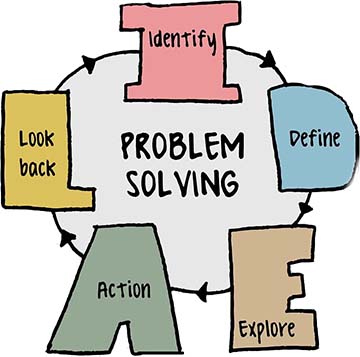By Paul Stein
Executive Director
 We hate problems, and we love them. No one enjoys an insurmountable challenge, but who doesn’t enjoy solving a problem that first seemed insurmountable? Games, after all, are all about problem solving, and we do them in our leisure time. Just think about the recent word game phenomenon, WORDLE.
We hate problems, and we love them. No one enjoys an insurmountable challenge, but who doesn’t enjoy solving a problem that first seemed insurmountable? Games, after all, are all about problem solving, and we do them in our leisure time. Just think about the recent word game phenomenon, WORDLE.
Our ability to succeed in school and in life depends on our ability to solve problems, big and small. Problem-solving skills are not innate skills. They require preparation, confidence, and grit, along with an understanding of just how to go about solving a problem. Some of this is content-area specific, and some generic to all problems. Problem solving involves clarifying what the problem actually is, questioning your assumptions, generating ideas and options, choosing a preferred strategy, testing it out and evaluating the results. There are, of course, creative strategies which help in approaching these tasks, such as using analogies to help generate ideas for possible solutions.
At Schools for Children, we teach problem solving skills across our programs, at all ages and content levels. There is a saying that students learn to read and then read to learn. I also believe they learn to problem solve and then problem solve to learn.
